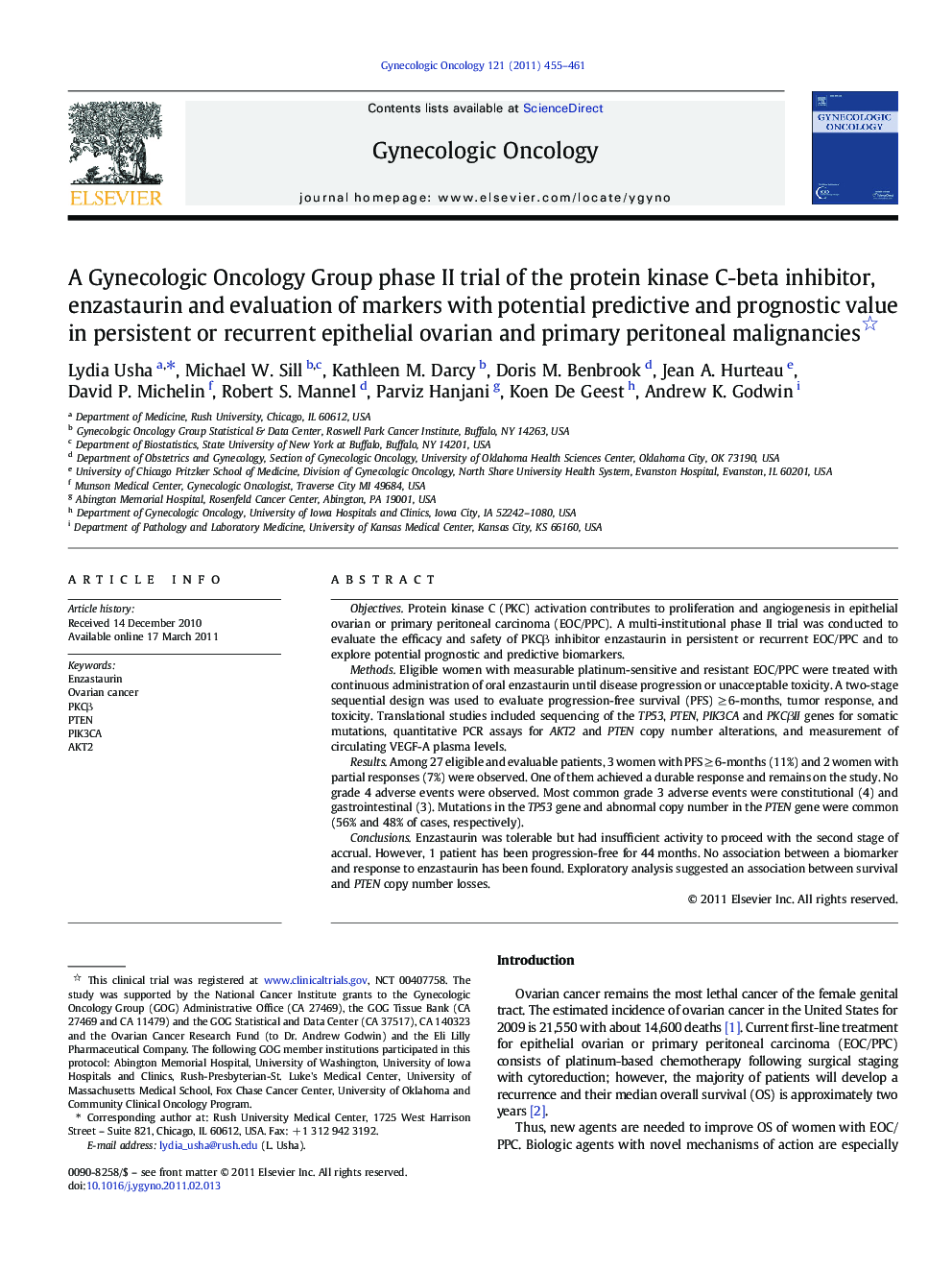| Article ID | Journal | Published Year | Pages | File Type |
|---|---|---|---|---|
| 3947125 | Gynecologic Oncology | 2011 | 7 Pages |
ObjectivesProtein kinase C (PKC) activation contributes to proliferation and angiogenesis in epithelial ovarian or primary peritoneal carcinoma (EOC/PPC). A multi-institutional phase II trial was conducted to evaluate the efficacy and safety of PKCβ inhibitor enzastaurin in persistent or recurrent EOC/PPC and to explore potential prognostic and predictive biomarkers.MethodsEligible women with measurable platinum-sensitive and resistant EOC/PPC were treated with continuous administration of oral enzastaurin until disease progression or unacceptable toxicity. A two-stage sequential design was used to evaluate progression-free survival (PFS) ≥ 6-months, tumor response, and toxicity. Translational studies included sequencing of the TP53, PTEN, PIK3CA and PKCβII genes for somatic mutations, quantitative PCR assays for AKT2 and PTEN copy number alterations, and measurement of circulating VEGF-A plasma levels.ResultsAmong 27 eligible and evaluable patients, 3 women with PFS ≥ 6-months (11%) and 2 women with partial responses (7%) were observed. One of them achieved a durable response and remains on the study. No grade 4 adverse events were observed. Most common grade 3 adverse events were constitutional (4) and gastrointestinal (3). Mutations in the TP53 gene and abnormal copy number in the PTEN gene were common (56% and 48% of cases, respectively).ConclusionsEnzastaurin was tolerable but had insufficient activity to proceed with the second stage of accrual. However, 1 patient has been progression-free for 44 months. No association between a biomarker and response to enzastaurin has been found. Exploratory analysis suggested an association between survival and PTEN copy number losses.
Research highlights► An oral PKCβ inhibitor enzastaurin had limited activity in ovarian cancer. ► No studied biomarker was predictive for a response or resistance to enzastaurin. ► PTEN copy number loss may correlate with poor survival in ovarian cancer.
